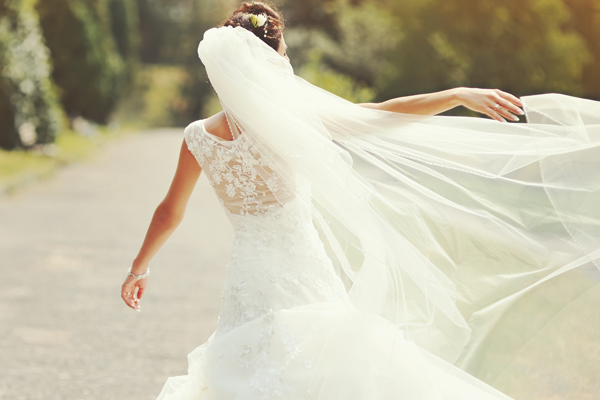Let’s talk veils

Happy New Year!!!!
Let’s talk about veils…..
The tradition of wearing a veil dates back to the 2nd and 3rd centuries BC. Many religions and customs incorporated veiling and its symbolism’s.
In the 19th century, wedding veils came to symbolize the woman’s modesty and virginity. The tradition of a veiled bride’s face continues even today wherein, a virgin bride, especially in Christian or Jewish culture, enters the marriage ritual with a veiled face and head, and remains fully veiled, until the ceremony concludes. After the full conclusion of the wedding ceremony, either the bride’s father lifts the veil giving the bride to the groom who then kisses her, or the new groom lifts her face veil in order to kiss her, which symbolizes the groom’s right to enter into conjugal relations with his bride.
Today the veil is used in part to conform to the wedding tradition, but mostly to accessorize a wedding gown. Here’s the deal – there really are no strict rules at all. You can wear whatever you feel like wearing. Many modern brides choose no veil at all and instead go for something less traditional. A flower garland, a wispy bendable hair piece, natural leaves and berries, a birdcage veil. All of those can work. The best advice is to let your dress guide your choice.
Veils come in many styles and designs. Single and double layer, various lengths, different colors,
Lacey, embellished, sequined, beaded, edged or just simple tulle. Then there is also the birdcage veil, either on its own or attached to a fascinator or headband. When trying on veils with your dress, do take into consideration your hair style. Experiment with your hair up, down, half up, side knot etc. Think about the reception and whether you’ll keep the veil on or remove it. You want to look stunning with and without your veil. Consider including a decorative comb or fancy hairpins that remain well placed once you remove your veil.
